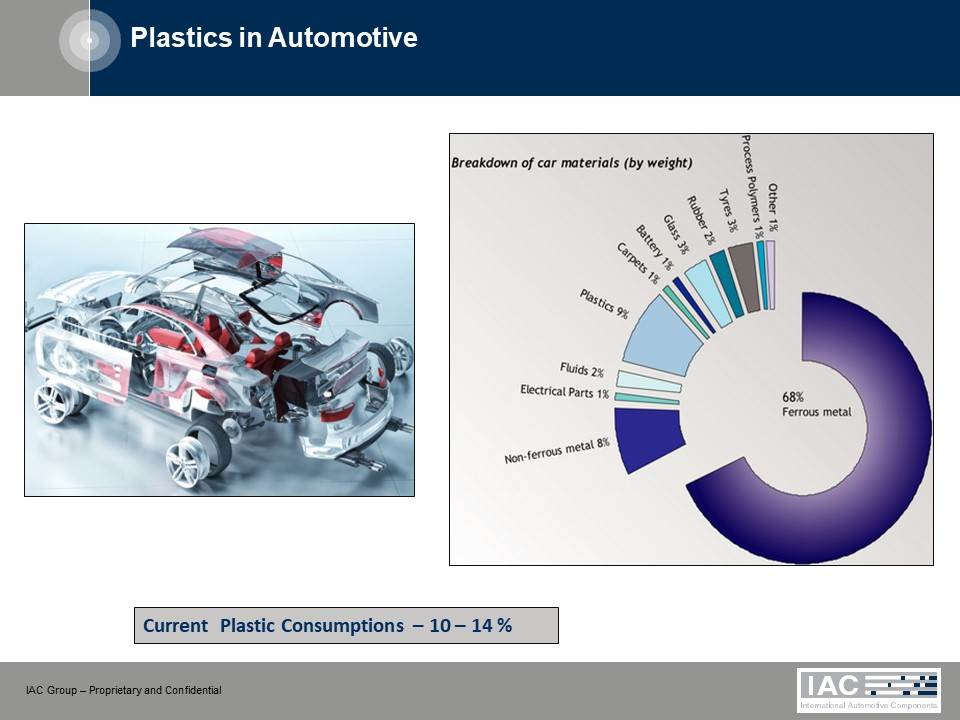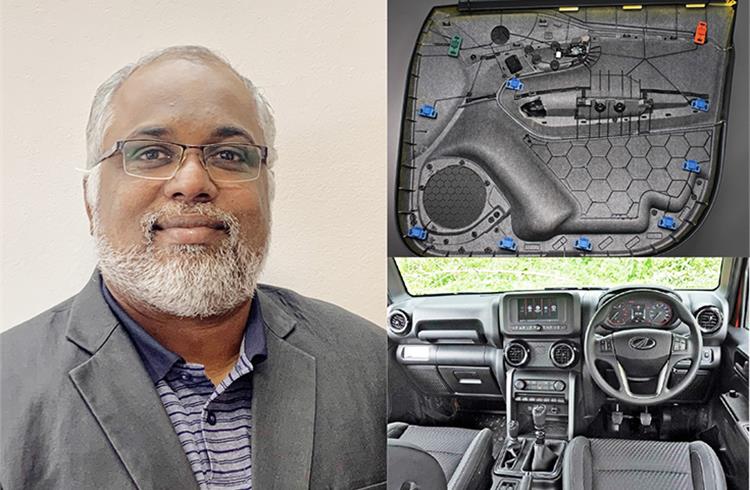IAC India’s PC Jayan: ‘With BS VI, use of plastics in vehicles has gone up by 12-14%.’
IAC India was a key contributor to the new Mahindra Thar’s interiors. PC Jayan, Director – Engineering, speaks on the impact of the pandemic, new trends, lightweighting and more.
The International Automotive Components (IAC) Group is a major supplier of instrument panels, consoles, door panels, overhead systems, bumper fascias and exterior ornamentation to India Auto Inc. The company was a key contributor to the interiors of the new Mahindra Thar. PC Jayan, Director – Engineering, International Automotive Components (IAC), India Operations speaks to Sricharan R on the impact of the pandemic, new trends, lightweighting and more. Excerpts:
The pandemic came in after the downturn in the automotive industry in 2019. How was IAC India impacted?
We had a set of developments focussed for the Indian market. This includes the recently launched new Mahindra Thar. Our projects were going as planned until lockdown. Till March 2020 we had a business plan in place and we could see this going smooth with multiple shifts. Then the sudden change came in the way we needed to operate. Initially, it took time as our R&D is more of a soft skill. We have to make sure the team is aligned. IAC kept up with the target and we were delivering it.
Also, from the company side, we got more freedom now with the WFH culture. For a Tier 1 company like IAC, we felt standardisation can be enhanced more. And, we tried to get off from domestic programs as the global needs increased.
This was due to the surrounding effect in local centres of North America, China and Germany. So, the opportunities were increased. Earlier, people had to travel to a location for a particular project. It is not a need now and we can sit in our own locality to work for it. This was a boost.
How did R&D operations continue during the lockdown?
We are more about soft skills. The design and engineering kept ongoing. Yes, there were challenges. Any software design companies provide continuous support and those were suddenly cut off. One better aspect of the lockdown was group discussions.
With the lifetime of a vehicle coming down sharply, does this put more pressure of companies like IAC?
We get very early engagement in a project. Usually, a project goes between 18-22 months for any new product profile. This lockdown of eight months should not have affected developmental involvement, but it did. What we were working was assigned to us already and we were carrying out this year as an execution phase. There was a slight delay in testing, validation phase due to the non-availability of resources in the time of pandemic. The rollout which we could have done in a typical three months’ timeline, has now taken 4-5 months.
The product development model has taken an extended time of 26-28 months from 18-22 months. But, we never know when is it a good time to launch a product. The timeline was affected and this was a challenge. Today, we could have been working on something else if the previous products were launched now. All the orders that we got from the auto show, is coming in the near future and these changes stalled us a bit.
What new trends do you see in the cockpit solutions market worldwide? And, are you working on bringing this to the Indian market?
We had already taken on the challenge of BS VI. Whenever new regulations are introduced, the first thing that comes to an OEM’s mind is vehicle weight. So, how do you work products to make them more lightweight? We already had technologies that could get weight reductions which are available globally. Now, the challenge is to get them into India. For example, how composites can enhance some more product application. We are already into some areas where new product launches would see a distinctive advantage that we can bring in the market. With BS VI, use of plastics has gone up by 12-14% and this is going to increase further.

Lightweighting is a big bonus entering into 2021, and now it is coming with a cap from the government. With the regulations coming in, cost is also going to play a major role. For example, a 20% weight reduction in the same product is going to pose a tough challenge. With this, the final product will be the same shape and size but through technology, it is going to be distinctive. This will boost the capability of all the engineers who are working in the industry.
Earlier, trends were set just by the virtue of density but now the shift is coming towards the composites. For example, what polypropylene could deliver is going to be changed with the use different filler additives. A product which was 3 mm thick in the drawing board, can go to 2.3 mm thickness. The product evolution with a change in material families is going to improve. This is where we see challenges increasing. Though plastics were there from 1985-90 in India, the application of plastics has converted with process advantage.
Are you also working with EV makers?
The role of composites is important and the industry is looking at various options. This is a constantly developing area. And, how to get it more natural is something we have to look now. We are looking at some more applications with natural fibres like jute, which can give the same reinforcement. The second challenge is substituting sheet metal. How much steel can you take out and can be replaced. Products like front end module and cockpit are some of the areas where we have already looked at how plastic composites can play a major role.
A few OEMs have already substituted plastics and this is going to increase further in the years to come. Performance and safety have already come in and now how you drive and achieve the best matters.
Are you working with nanomaterials?
We have also worked with nanocomposites. But, it all depends on product availability. It needs to be always on the right balance. It does not really mean a rigid interior is safe as it might dangerous to passenger safety. And, customers are looking to have a car interior that is just like home. Many OEMs are coming with things like a large screen, touch-screen et al. So a mix of everything matters.
Do you plan to expand the IAC India development centre?
The investment varies and there are plans to expand the Center too. We will see investments in light-weighting and in terms of products. There are a few in the pipeline and it is going to be exciting for us.
Who are your major customers in the Indian market?
Our key clientele include Mahindra & Mahindra, Ashok Leyland, Maruti Suzuki India and Volkswagen among others. IAC has contributed a lot to Force Motors’ vehicle interiors. We have satellite plants in VECV and all their cabin improvements have been contributed by us. We are also in talks with Tata Motors. There will be many new additions and we could see products coming until 2022.
RELATED ARTICLES
BRANDED CONTENT: 'We aspire to be among the leading sensors and electro-mechanical products manufacturer'
P. Parthasarathy, Founder & Managing Director, Rotary Electronics Pvt Ltd shares the company's commitment and vision to ...
‘Big opportunity for startups lies in products in India’: Detlev Reicheneder
As electrification levels the playing field, the focus on tech and R&D to bring innovative products is the mantra for st...
'I hope my journey makes people say — I can do this too'
Ranjita Ravi, Co-founder of Orxa Energies — the maker of Mantis e-bikes — shares the challenges of building a startup an...





 12 Jan 2021
12 Jan 2021
 22639 Views
22639 Views





 Autocar Pro News Desk
Autocar Pro News Desk




